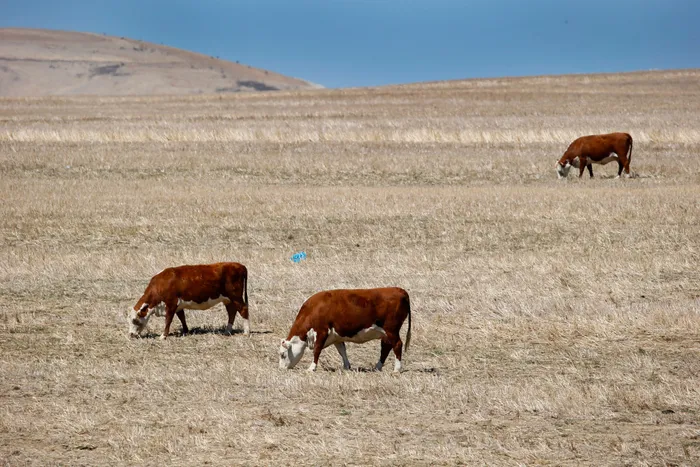
A report by the Red Meat Industry Services (RMIS) released this week on the Red Meat Industry in July indicates that beef production is set to fall by 20 thousand tons year-on-year to 764 thousand tons in 2025, although still maintaining a supply surplus.
Image: File
The latest report from Red Meat Industry Services (RMIS), released this week, reveals troubling forecasts for South Africa's beef production, with estimates indicating a decline of 20 000 tons year-on-year, bringing total production down to 764 000 tons by 2025.
Despite this downturn, the report affirms that the country maintains a supply surplus, albeit amidst a backdrop of significant challenges within the industry.
RMIS notes the past five years have proven particularly challenging for both the beef and sheep sectors.
A combination of rising feed costs, erratic weather patterns, ongoing loadshedding, and global disruptions stemming from the COVID-19 pandemic have contributed to a perilous financial landscape for farmers, feedlots, and abattoirs.
With profit margins squeezed, stakeholders have struggled against high input costs and weakened consumer demand.
However, there is a glimmer of hope on the horizon. The report highlights signs of recovery, as export volumes hit record highs in the first quarter of 2025, boosting overall revenue and production.
Better weather conditions and increasing local and global demand are expected to provide some respite to profitability pressures. This trend is evidenced in rising producer and retail prices alongside decreasing feed costs.
Yet, the emergence of Foot and Mouth Disease (FMD) is creating renewed uncertainty, complicating the growth trajectory of the industry.
In 2024, South African beef exports fared relatively well against a backdrop of increased international demand, particularly from top importers such as China, the United States, and Japan, which collectively upped imports by 10.9% compared to the previous year.
As South American countries capitalised on lower local production, China notably turned to South American beef imports, while declining domestic herd sizes in the US drove up their beef imports as well.
Despite these opportunities, South African cattle farmers have found themselves battling soaring feed costs due to adverse weather conditions. The result has been a reduction in slaughter weights as producers adapt to these tough challenges, necessitating increased slaughters to maintain production volumes.
Yet, optimism exists for the 2024/25 grain production season, with late-summer rains set to enhance maize and soybean yields, potentially leading to lower feed prices that could cushion farmers and feedlot operators in 2025.
While beef production is forecasted to fall to 764 000 tons, the industry remains on alert for further impacts from the recent FMD outbreaks, which pose significant challenges for market access and export volumes.
The report indicates that countries like China have already imposed import bans from South Africa, hampering efforts to alleviate the surplus in international markets.
On a brighter note, exports of South African sheep meat rose to 11 400 tons in 2024, primarily destined for the Middle East. However, domestic demand has waned due to economic constraints and stiff competition from alternative meats.
Rising export prices present potential profitability avenues, yet the ongoing threats posed by FMD could hinder overall trade and price stability in 2025.
Despite setbacks, RMIS notes that South Africa made strides in managing FMD outbreaks in 2024, although new cases in KwaZulu-Natal, Eastern Cape, Gauteng, North West, and Mpumalanga remain concerning.
Increased veterinary funding aims to bolster disease management efforts, with both government and private-sector initiatives concentrating on essential tactics such as traceability enhancement, disease control measures, and stabilising red meat trade against potential disruptions.
"The red meat industry must leverage lower feed costs and improving global demand to ensure its viability," RMIS points out, underscoring the competitive pressures of engaging with established global players like Australia and Brazil, while simultaneously combatting market access threats posed by disease.
BUSINESS REPORT